- Shop Now
- Burncoose Specialities
- This Month
- Offers & Promotions
- RHS Chelsea Flower Show 2024
- 40 years at Burncoose
- Engage With Us
- Information, Help & Advice
- About Us & Our Services
- Terms & Conditions
- Log In / Register
EUPHORBIA
Commonly known as Spurge, Wolf's milk
Very varied genus of about 2000 species of annuals, biennials, evergreen, semi-evergreen or herbaceous perennials, deciduous or evergreen subshrubs, shrubs and trees and succulents.
Many uses including for mixed borders, woodland gardens and rockeries though notice should be taken of the milky sap which can irritate the skin and no part should be eaten.
Many are attractive to insects.
There are 10 UK native spurges, most of which are common.
-
Deciduous
-
Evergreen
-
Ground coverThese plants are typically low growing and spread quickly to inhibit weed growth on areas of bare soil
-
HerbaceousEarly in the year, typically January till end of March, herbaceous plants might be supplied in 9cm pots to ensure timely despatch.
-
Medium shrubTypically grow to around 4-6 feet in height
-
Tall Shrub
-
Additional Features
 Good to knowMuch reduced floral parts (cyathia) are usually cupped by involucres of long-lasting fused bracts
Good to knowMuch reduced floral parts (cyathia) are usually cupped by involucres of long-lasting fused bracts Place of originWidely distributed in temperate sub tropical and tropical regions.
Place of originWidely distributed in temperate sub tropical and tropical regions. -
Toxic - Category B - CAUTION
 Skin & eye irritantPeople and pets, i.e. cats, dogs, rabbits, rodents
Skin & eye irritantPeople and pets, i.e. cats, dogs, rabbits, rodents Toxic if eatenPeople and pets, i.e. cats, dogs, rabbits, rodents
Toxic if eatenPeople and pets, i.e. cats, dogs, rabbits, rodents -
WildlifeRabbit Resistant
- Growing & Caring for Euphorbia
- Evergreen pruning - Video Tip ondemand_video
- Dead heading in June - Video Tip ondemand_video
- Dividing Herbaceous Perennials - Video Tip ondemand_video
- Spring Planting Osteospermums - Video Tip ondemand_video
- Dividing Summer Perennials - Video Tip ondemand_video
- Dividing summer flowering Hemerocallis - Video Tip ondemand_video
- Summer propagation - Video Tip ondemand_video
- Self-seeding aquilegia - Video Tip ondemand_video
- Supporting Plants - Video Tip ondemand_video
- Dead heading meconopsis - Video Tip ondemand_video
- Dead heading Delphiniums - Video Tip ondemand_video
- Feeding herbaceous peonies - Video Tip ondemand_video
- Overpotting Problems - Video Tip ondemand_video
Buy Varieties of EUPHORBIA

EUPHORBIA amygdaloides purpurea
(rubra) - reddish bronze foliage, upright growing

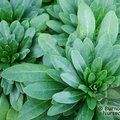
EUPHORBIA amygdaloides var robbiae
lime-green-yellow flowers

EUPHORBIA amygdaloides 'Ruby Glow'
new leaves bright red, darkening with age to purple-black, on maroon stems

EUPHORBIA 'Blackbird'
deep red stems, blue-green leaves and dome-shaped yellow flowers
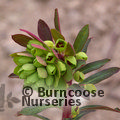
EUPHORBIA characias
flowers green with chocolate centres

EUPHORBIA characias 'Black Pearl'
flowers are greenish-yellow with a distinctive black eye
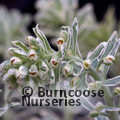
EUPHORBIA characias 'Silver Swan'
dazzling silver variegated foliage and silver variegated flower heads


EUPHORBIA characias 'Tasmanian Tiger'
a variegated form with a neat shape and one of the most attractive leaf-flower combinations
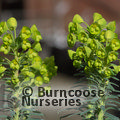
EUPHORBIA characias wulfeni
extra large flowers, lime-green

EUPHORBIA cyparissias 'Fens Ruby'
spreading form with feathery bluish leaves and yellow-green flowers

EUPHORBIA cyparissias 'Orange Man'
feathery blue-green foliage, tinted orange in autumn. Yellow flowers in spring, ageing to orange/red

EUPHORBIA 'Diamond Frost'
clouds of airy white flowers throughout spring and summer but not hardy

EUPHORBIA epithymoides 'Bonfire'
blue-green leaves flushed with flame-like red-purple shades, becoming dark red in autumn. Yellow flowers

EUPHORBIA griffithii 'Fireglow'
orange-red
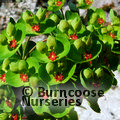
EUPHORBIA x martinii
shrubby spurge with acid yellow flowers and good autumn colour
Useful extras...

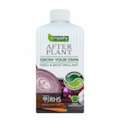

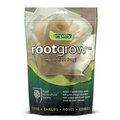







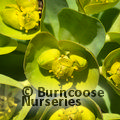
 Gift-wrapping available
Gift-wrapping available




